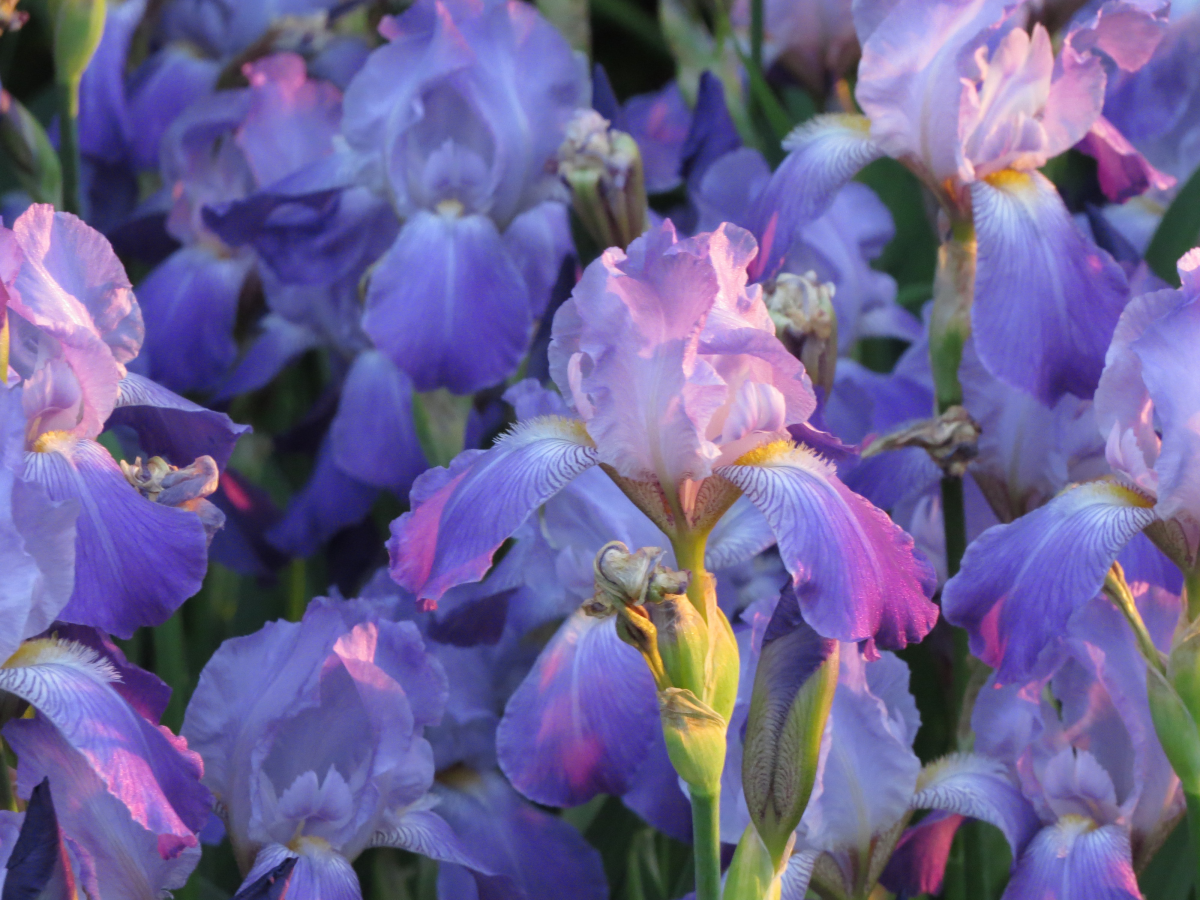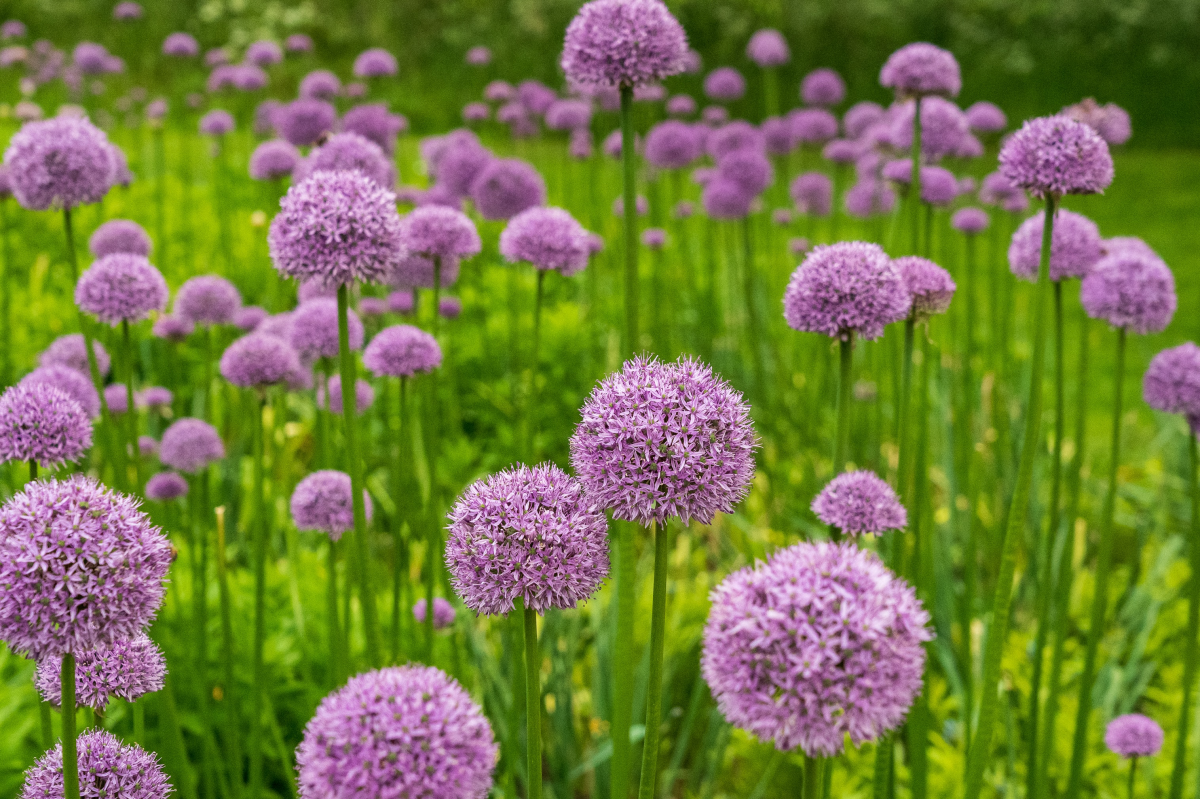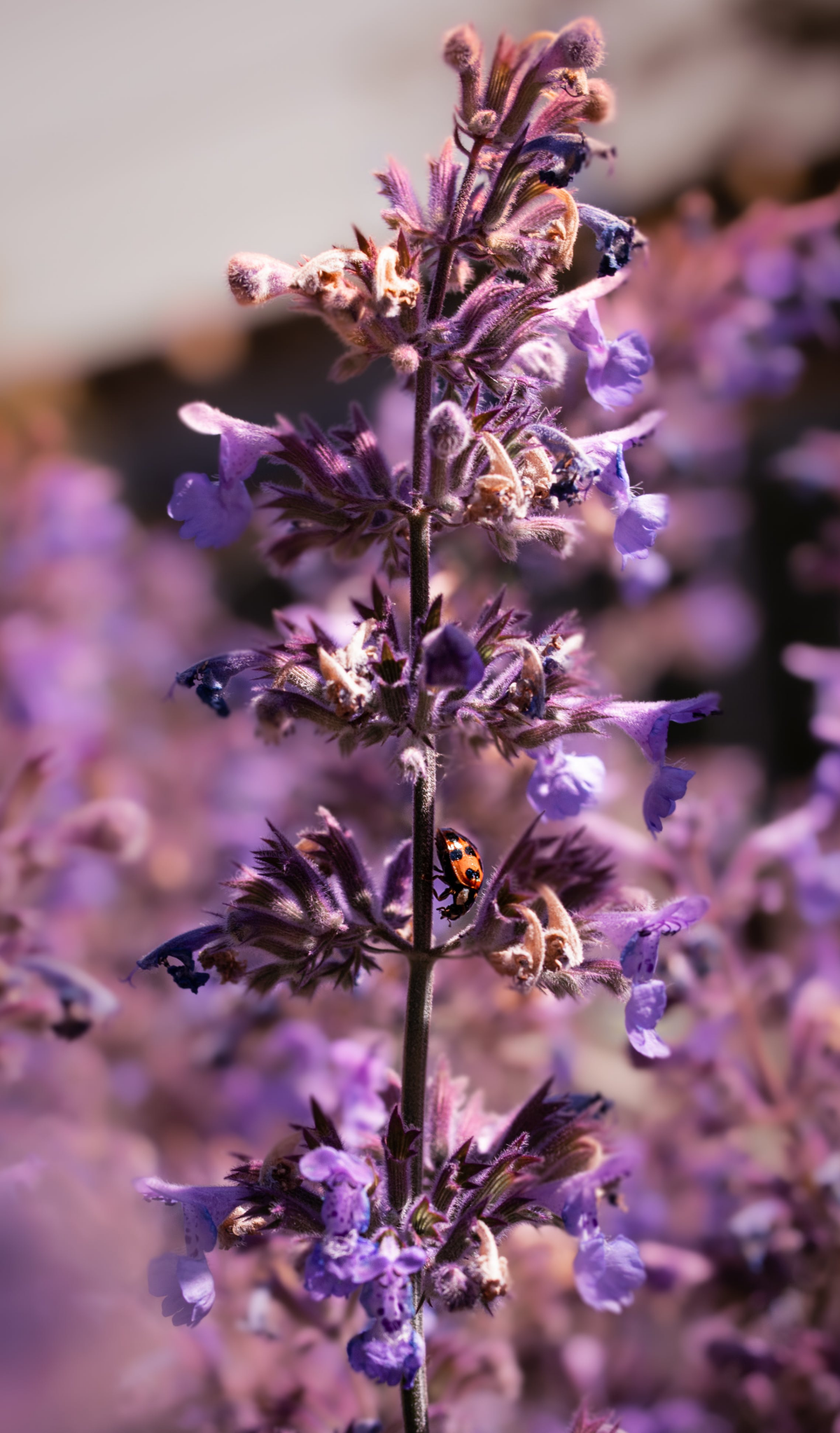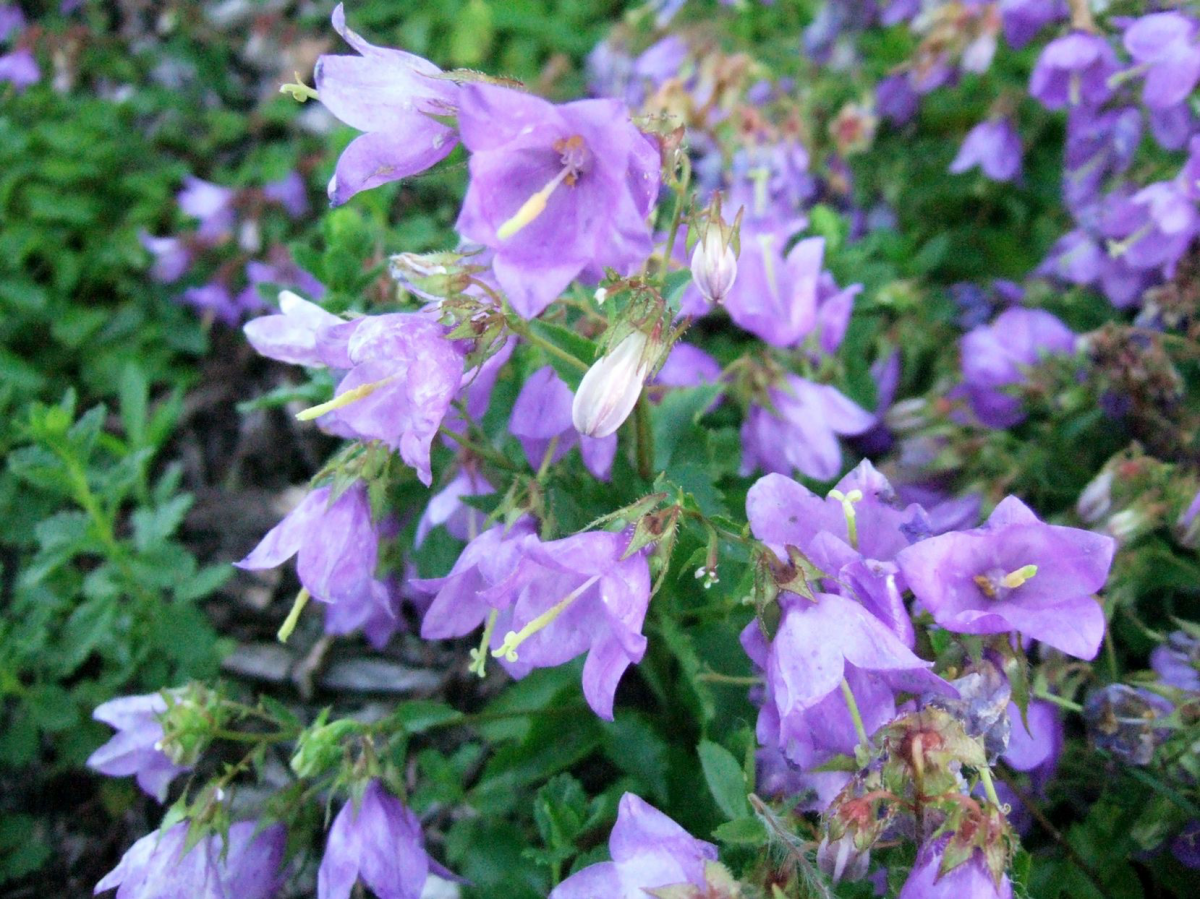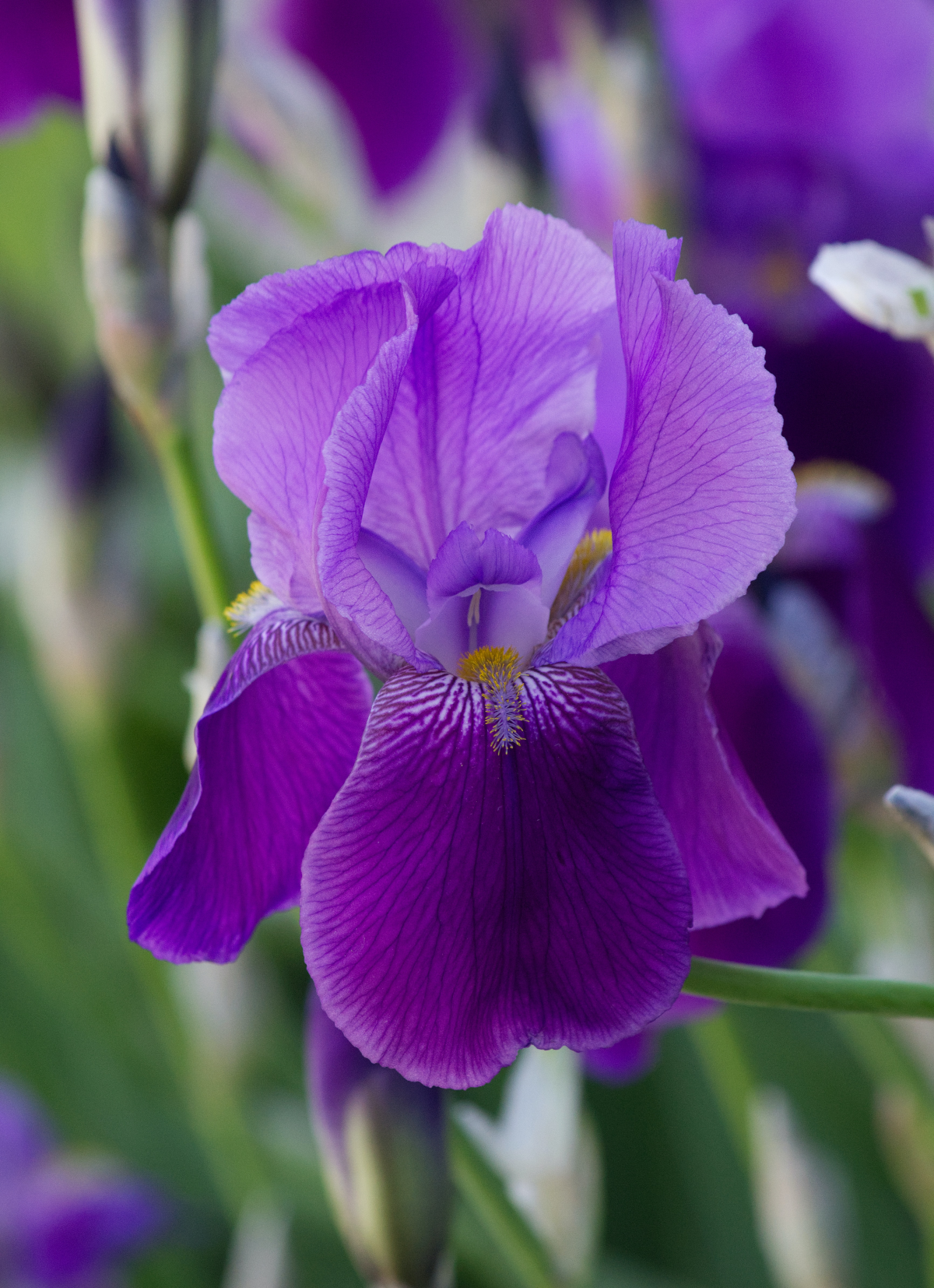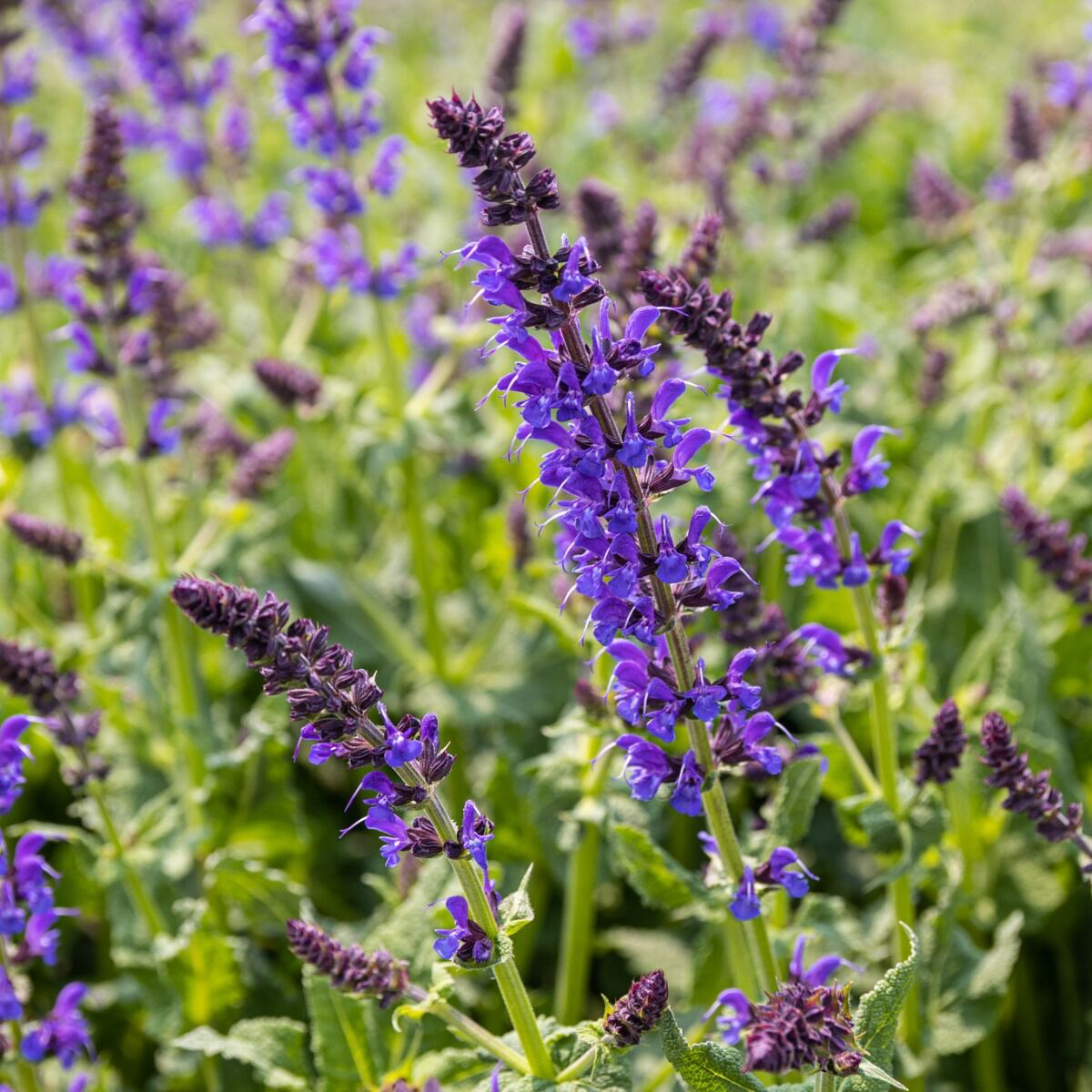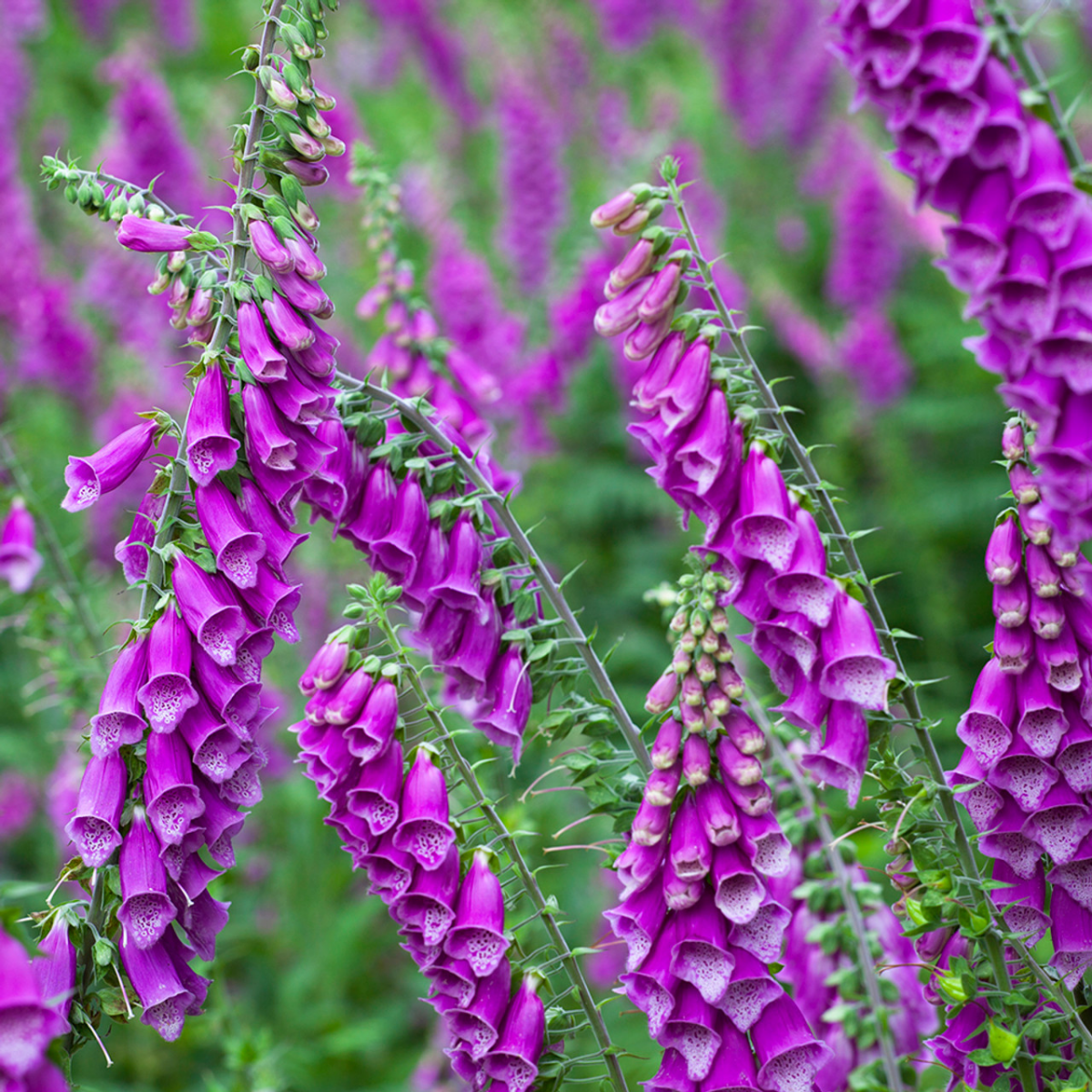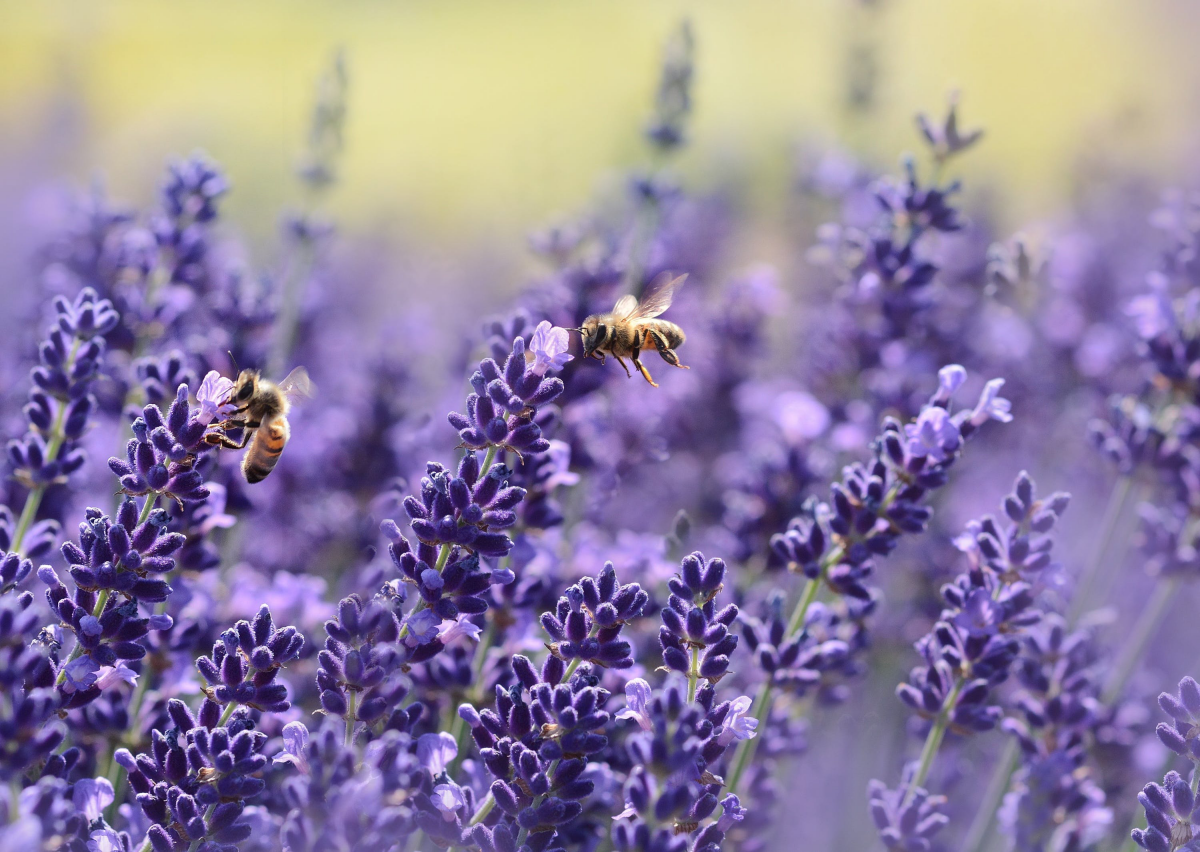10 Must-Have Purple Flowers For A Magical Garden
Enveloping your garden in shades of purple transcends mere aesthetics. It cultivates an ambiance imbued with tranquility and mystique. Purple is a hue often linked to royalty and enchantment. So, it bestows upon your garden an air of luxury and otherworldly charm. This color’s allure isn’t solely visual. Purple flowers also play a pivotal role in attracting pollinators, thereby bolstering garden biodiversity. Plus, they also possess a unique therapeutic quality, exerting a calming effect on the mind. Such attributes make them a stellar choice for gardeners who value both visual beauty and ecological functionality. Integrating these blooms into your garden not only enhances its visual appeal but also contributes to a healthier, more vibrant ecosystem. This harmonious blend of aesthetic appeal and environmental benefit positions purple flowers as a quintessential element for any garden that aspires to be both beautiful and beneficial.
Purple is a hue often linked to royalty and enchantment
In this article
Beautiful Purple Flowers
In the realm of nature, the color purple is laden with rich symbolism, spanning from creativity to spirituality. Embracing this vibrant hue in your garden is more than a visual feast. It’s a statement of connection with the deeper rhythms of the natural world. The inclusion of purple flowers introduces a dynamic layer of depth and contrast. When set against the verdant greens typical of a garden, they create a striking visual harmony. This interplay of colors elevates a simple garden to a picturesque landscape, akin to a living canvas painted with nature’s palette. Purple flowers, with their vivid hues and varied textures, not only enhance the garden’s aesthetic but also enrich its character. They transform ordinary spaces into extraordinary showcases of natural beauty, illustrating the profound impact that thoughtful floral selection can have on the overall ambiance of a garden.
The color purple is laden with rich symbolism
Lavender
Lavender, celebrated for its soothing hue and aromatic properties, brings a multi-sensory experience to the garden, captivating both the eyes and the nose. This plant isn’t just a feast for the senses. It’s a symbol of serenity and grace. Lavender’s care is relatively straightforward, thriving most robustly in environments graced with well-drained soil and abundant sunlight. To ensure that your lavender plants reach their full potential, regular pruning is essential. This not only maintains their shape but also encourages healthier, more abundant blooms. Proper spacing is another crucial factor, as it allows each plant ample room to flourish without competition for resources. By adhering to these simple yet effective cultivation practices, you can transform your garden into a haven of lavender, replete with its mesmerizing color and calming fragrance.
Lavender’s care is relatively easy
Alliums
Alliums, renowned for their distinctive spherical blooms, infuse a unique architectural element into your garden. These flowers make a statement of sophistication and elegance, transforming ordinary spaces into showcases of design. Planting these globular beauties in clusters not only maximizes their visual impact but also creates a stunning focal point in your garden. Alliums are a dream for those seeking low-maintenance yet high-impact plants. They thrive in well-drained soil, basking in the full glory of the sun. This ease of care makes them a perfect choice for both novice and experienced gardeners. Their robust nature ensures they remain a perennial favorite, returning year after year to grace your garden with their presence. Alliums, with their tall stems and vibrant blooms, stand out against the green tapestry of the garden, offering a visual feast that is both elegant and effortlessly chic.
Alliums are renowned for their distinctive spherical blooms
Catmint
Catmint, with its extended blooming period and pollinator-friendly nature, is a beloved staple in many gardens. This herbaceous perennial exudes an informal and relaxed charm, infusing gardens with a touch of whimsy. Its soft, lavender-blue flowers and aromatic foliage make it a favorite among garden enthusiasts. To ensure your catmint thrives, provide it with ample sunlight, which is key to its growth and bloom. Occasional trimming not only helps maintain its shape but also encourages the plant to produce new growth and a fuller form. This easy-going plant is forgiving and adaptable, making it suitable for a variety of garden settings. Whether nestled in a flower bed, border, or container, catmint adds a playful and charming touch, enticing bees and butterflies alike. Its effortless beauty and undemanding nature make catmint a must-have for creating a lively and inviting garden atmosphere.
This herbaceous perennial exudes an informal and relaxed charm
Bellflowers
Bellflowers, with their enchanting bell-shaped blossoms, bring a fairy-tale quality to any garden. These charming blooms, ranging in shades from deep purples to soft lavenders, captivate onlookers with their delicate beauty. They thrive under the nurturing touch of regular watering, particularly crucial during dry spells. A location that offers a balance of sunny and partly shaded conditions is ideal for their growth. This balance ensures that the bellflowers receive just the right amount of light without being overwhelmed by harsh sun rays. Their versatility makes them a perfect fit for borders, rock gardens, or as ground cover, where they create a carpet of color. The enduring appeal of bellflowers lies in their ability to add a touch of whimsy and romance to garden spaces. Their effortless charm and ease of care make them a star in the garden, enchanting visitors and gardeners alike with their picturesque blooms.
Bellflowers thrive under the nurturing touch of regular watering
Coneflowers
Purple Coneflowers, with their audacious purple petals and commanding centers, offer a visually striking addition to any garden. Their bold colors not only captivate the eye but also play a vital role in attracting a bevy of butterflies, enhancing the garden’s biodiversity. Ideal for full sun environments, these resilient flowers flourish in well-drained soil, showcasing their hardy nature. A notable feature of Coneflowers is their drought tolerance, making them a robust choice for various climatic conditions. This resilience ensures that they remain a steadfast, vibrant presence in your garden, requiring minimal upkeep. The Coneflower’s ability to withstand less than ideal conditions without sacrificing its beauty makes it a royal asset in garden design. Integrating these majestic blooms into your landscape not only adds an element of visual drama but also fosters a dynamic ecosystem, teeming with wildlife.
A notable feature of Coneflowers is their drought tolerance
Iris
Irises, with their regal bearing and spectrum of purple hues, are a timeless favorite among garden enthusiasts. These flowers are celebrated for their elegant, sculptural form, adding a touch of sophistication and grace to any garden. They thrive best in environments where the soil is well-drained, and the sun generously bathes their petals. To maintain their vigor and aesthetic appeal, it’s crucial to divide their rhizomes every few years. This practice helps to prevent overcrowding, ensuring each plant has ample space to flourish. The act of dividing also stimulates new growth, keeping your Iris collection robust and lively. The Iris’s array of purple shades, from deep violets to soft lavenders, offers a visual feast, enriching the garden’s palette. Their classic charm and straightforward care requirements make them an exemplary choice for both novice and seasoned gardeners, looking to infuse their outdoor spaces with a sense of elegance and history.
The Iris’s array of purple shades offers a visual feast
Salvia
Salvia, known for its striking spikes adorned with purple flowers, is a standout plant that brings a steady burst of color throughout the gardening season. This hardy perennial is a favorite for its ability to continuously bloom, providing a consistent splash of color to your garden. It thrives in full sun, basking in the warmth, and flourishes in well-drained soil, showcasing its adaptability and resilience. Regular deadheading of Salvia is key to encouraging ongoing blooms, ensuring a long-lasting display of its vibrant purple flowers. This simple maintenance step not only prolongs the flowering period but also helps maintain the plant’s vigor and shape. Salvia’s elegant yet understated presence makes it an indispensable addition to any garden, offering a blend of visual appeal and ease of care.
This hardy perennial is a favorite for its ability to continuously bloom
Foxglove
Foxgloves stand as majestic sentinels in the garden, their tall spires adorned with bell-shaped flowers adding a touch of drama and vertical interest. These enchanting biennials thrive in conditions that mimic their native woodland habitats – moist, well-drained soil and dappled sunlight. Their ability to self-seed readily is a boon for gardeners, as it ensures a recurring display of their stately beauty year after year. When planted in groups, foxgloves create a visually striking scene, their towering blooms rising above other garden plants, adding depth and a layered look to the garden’s design. Their blooms not only add height and drama but also attract a myriad of pollinators, playing a crucial role in the health of your garden’s ecosystem. The presence of foxgloves in a purple-themed garden is transformative, turning an ordinary space into an extraordinary one, where height, color, and nature’s magic converge.
These biennials thrive in conditions that mimic their native woodland habitats
Verbena
Verbena, with its clusters of small, vibrant flowers, injects a lively burst of energy into any garden setting. The intense purple of verbena blooms creates a striking contrast against the green foliage, enhancing the overall beauty of your garden. Ideal for full sun locations, verbena thrives in well-drained soil, showcasing its adaptability and resilience. Despite their delicate appearance, these plants are notably drought-tolerant. This makes them a perfect choice for gardens in dryer climates or for gardeners seeking low-maintenance yet impactful plants. When verbena is planted en masse or intermingled with other garden flowers, it creates a tapestry of color that is both dynamic and harmonious. The minimal care requirements of verbena, coupled with its ability to make a significant visual impact, make it a highly recommended addition for anyone looking to introduce vibrant color and vivacity to their garden.
The intense purple of verbena blooms creates a striking contrast against the green foliage
These are some magical purple flowers you can add to your garden. Each plant brings its unique charm and character, collectively creating a garden that is not only visually stunning but also a nurturing haven for local wildlife. While these ten purple flowers provide a foundation, the true enchantment lies in how you, as the gardener, curate and arrange them. Your personal style and creativity are the final, crucial ingredients in transforming your garden into a magical realm. This purple paradise is more than just an idea – it’s a tangible, achievable dream. With the right plants and a touch of imagination, your garden can become a mesmerizing retreat, where beauty, nature, and tranquility coalesce. The magic of a purple garden is within your grasp, waiting to be realized and enjoyed.
These are some magical purple flowers you can add to your garden
